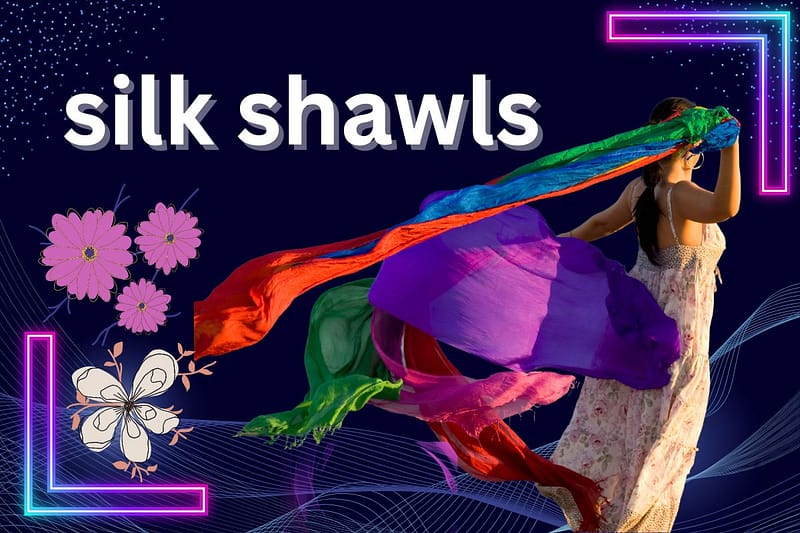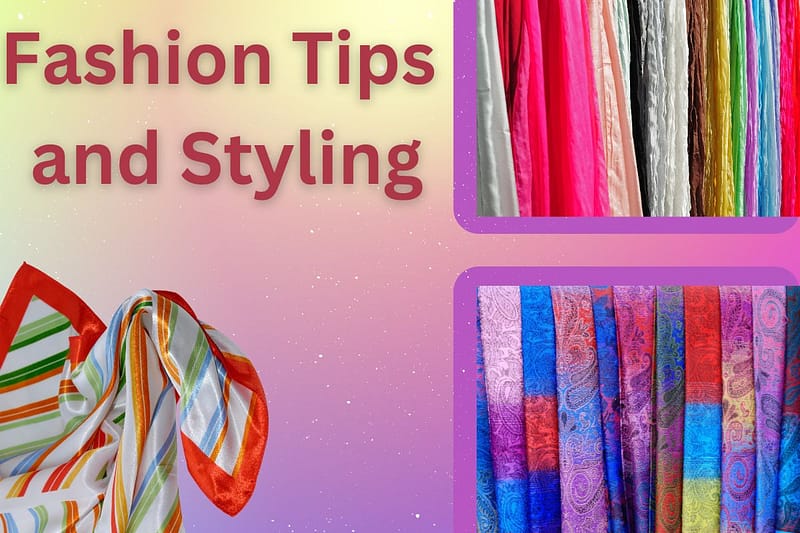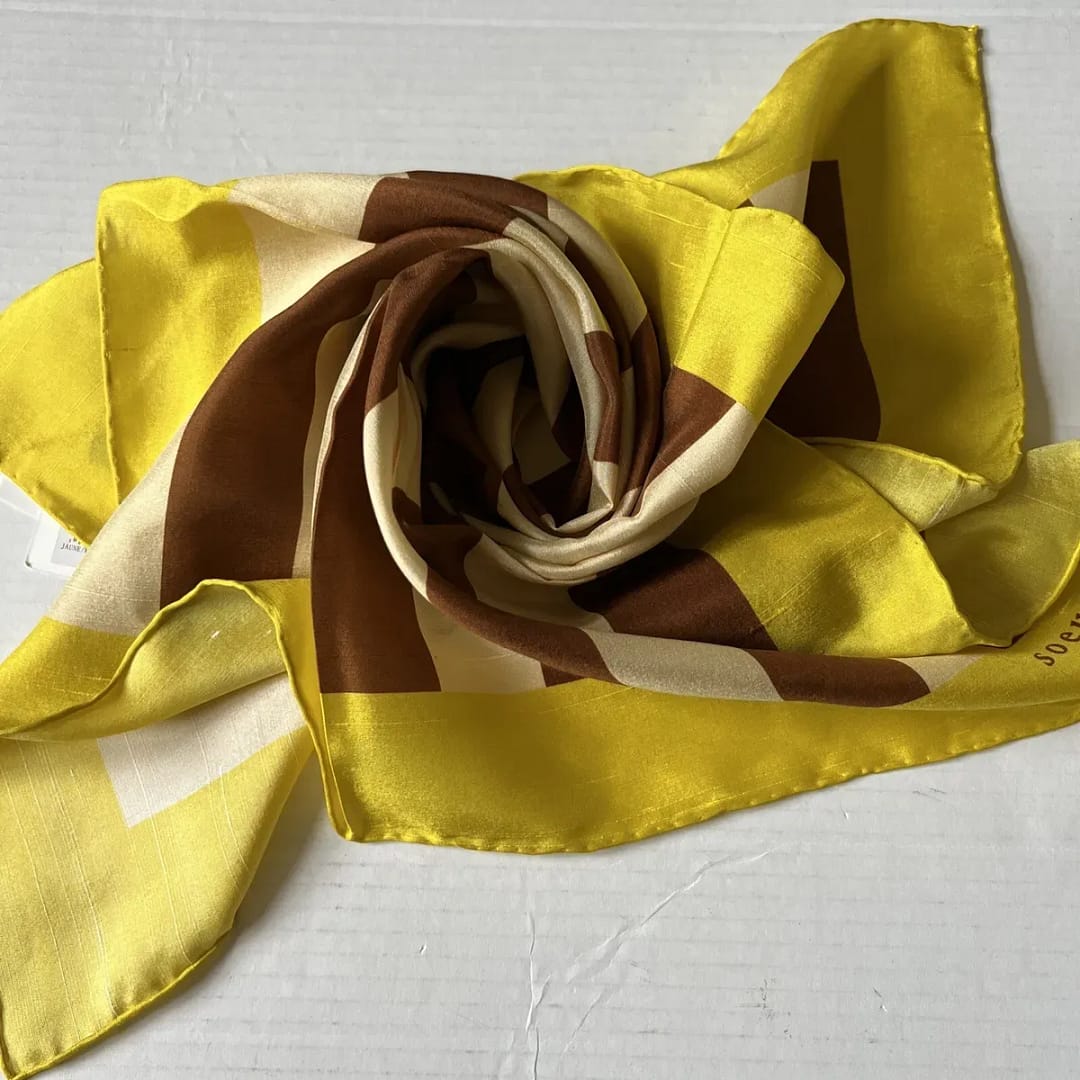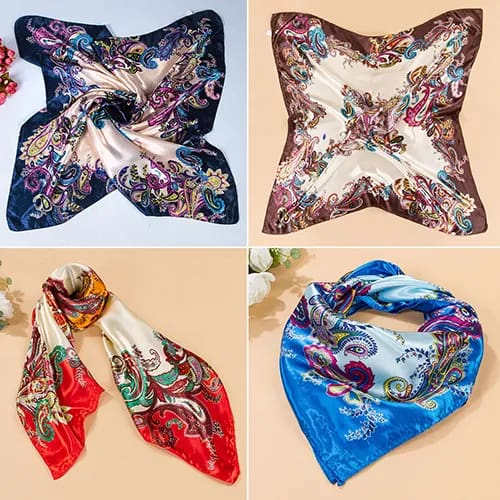Silk Shawl

Silk shawls, those elegant drapes of luxury, have a rich history that dates back centuries. They’re more than just fashion accessories; they’re symbols of refinement and grace. Let’s delve into the fascinating world of silk shawls, exploring their origins, types, designs, cultural significance, benefits, care tips, fashion advice, and more.
History of Silk Shawls
Early Origins
The story of silk shawls begins in ancient times, where silk was a prized commodity treasured by royalty and the elite. The intricate art of silk weaving originated in China around 3,000 BCE and gradually spread along the Silk Road, connecting East and West.
Silk Trade Routes
The Silk Road played a crucial role in the spread of silk shawls across continents. This network of trade routes facilitated the exchange of goods, ideas, and cultures between China, India, Persia, and Europe. Silk shawls became highly sought-after luxury items, coveted for their exquisite craftsmanship and luxurious texture.
Types of Silk Used in Shawls
Mulberry Silk
The most common type of silk used in shawl production is mulberry silk. Produced by silkworms fed exclusively on mulberry leaves, this silk boasts a smooth texture and a natural sheen that adds a touch of elegance to any outfit.
Tussar Silk
Tussar silk, also known as wild silk, is derived from the cocoons of wild silkworms found in forest habitats. It has a rich, textured feel and a subtle sheen that lends a rustic charm to silk shawls. Tussar silk is prized for its natural beauty and unique irregularities in color and texture.
Eri Silk
Eri silk, also called peace silk, is produced by domesticated silkworms that feed on castor leaves. Known for its softness and durability, Eri silk is hypoallergenic and ideal for those with sensitive skin.
Designs and Patterns
Silk shawls come in a captivating array of designs and patterns, blending tradition with modern aesthetics.
Traditional Motifs
Silk shawls often feature traditional motifs inspired by nature, mythology, and cultural symbols. These motifs, such as paisleys, florals, and geometric patterns, are intricately woven or embroidered onto the fabric, adding depth and sophistication to the design.
Contemporary Styles
In addition to traditional motifs, contemporary designers are introducing bold prints, abstract patterns, and innovative textures to silk shawls. From modern geometric designs to abstract art-inspired prints, contemporary silk shawls offer a fresh take on classic elegance, appealing to fashion-forward individuals.
Cultural Significance
Silk shawls hold deep cultural significance in various societies around the world, serving as symbols of tradition, heritage, and identity.
Shawls in Different Cultures
In India, silk shawls are an integral part of traditional attire, worn during weddings, festivals, and religious ceremonies. They symbolize prosperity, blessings, and auspiciousness, and are often passed down through generations as cherished heirlooms. Similarly, in Western cultures, silk shawls are associated with elegance and refinement, worn during formal events and social gatherings to add a touch of glamour to the ensemble.
Rituals and Ceremonies
In many cultures, silk shawls play a significant role in rituals and ceremonies. They are exchanged as gifts to convey blessings, good wishes, and gratitude. Whether draped over the shoulders of a bride on her wedding day or presented as a token of respect during religious ceremonies, silk shawls symbolize warmth, love, and unity, strengthening social bonds and fostering cultural traditions.
Benefits of Silk Shawls
Silk shawls offer a multitude of benefits beyond their aesthetic appeal, making them a wardrobe staple for individuals of all ages.
Luxurious Feel
One of the most prominent benefits of silk shawls is their luxurious feel against the skin. Silk is renowned for its softness, smoothness, and lightweight texture, providing unparalleled comfort and elegance.
Versatility
Silk shawls are incredibly versatile accessories that can be styled in numerous ways. Whether draped elegantly over the shoulders, wrapped around the neck as a scarf, or worn as a headscarf, silk shawls effortlessly elevate any outfit, adding a touch of sophistication and glamour.
Durability
Despite their delicate appearance, silk shawls are surprisingly durable and long-lasting. With proper care, they can withstand years of wear without losing their luster or softness. Investing in a high-quality silk shawl is not only a fashion statement but also a timeless investment in style and luxury.
How to Care for Silk Shawls
Silk shawls are delicate garments that require special care to maintain their beauty and longevity.
Washing and Drying Tips
When washing silk shawls, it’s best to hand wash them using a mild detergent and lukewarm water. Avoid using harsh chemicals or bleach, as they can damage the delicate fibers of the silk. Gently swirl the shawl in the soapy water, then rinse thoroughly with clean water. To dry the shawl, lay it flat on a clean towel and gently roll it up to absorb excess water. Avoid wringing or twisting the fabric, as this can cause wrinkles and damage. Finally, lay the shawl flat to dry away from direct sunlight to prevent fading.
Storage Recommendations
When not in use, silk shawls should be stored properly to prevent damage and wrinkles. Avoid hanging them on hooks or hangers, as this can cause stretching and distortion of the fabric. Instead, fold the shawl neatly and place it in a breathable storage bag or box. Avoid storing silk shawls in plastic bags or containers, as they can trap moisture and lead to mildew growth. Store them in a cool, dry place away from direct sunlight to maintain their color and texture.
Fashion Tips and Styling

Silk shawls are versatile accessories that can elevate any outfit, whether for formal occasions or casual wear.
Formal Occasions
For formal events such as weddings, cocktail parties, or galas, opt for silk shawls in classic colors like black, navy, or champagne. Choose shawls with elegant embellishments such as sequins, beads, or embroidery for added glamour. Drape the shawl over your shoulders or wrap it around your arms for a sophisticated and polished look that complements your evening gown or cocktail dress.
Casual Wear
For casual outings or everyday wear, silk shawls can add a touch of elegance and style to your ensemble. Pair a brightly colored silk shawl with jeans and a basic tee for a chic daytime look, or layer it over a sundress for a bohemian vibe. Experiment with different draping styles, such as looping it around your neck as a scarf or tying it in a loose knot for a relaxed yet stylish look.
Famous Silk Shawl Manufacturers
When shopping for silk shawls, there are several reputable brands known for their quality craftsmanship and exquisite designs.
Heritage Brands
Luxury fashion houses like Chanel, Gucci, and Hermès are renowned for their iconic silk shawls. These heritage brands uphold centuries-old traditions of craftsmanship and quality, producing timeless pieces that are treasured by collectors and fashion enthusiasts alike. Investing in a silk shawl from a heritage brand is not only a fashion statement but also a symbol of luxury and sophistication.
Emerging Designers
In addition to established luxury brands, there is a growing number of emerging designers making their mark in the world of silk shawls. These independent artisans offer unique handmade pieces with a contemporary twist, combining traditional techniques with modern aesthetics. Supporting emerging designers allows you to discover one-of-a-kind silk shawls that reflect your personal style and support small businesses in the fashion industry.
Buying Guide
When purchasing a silk shawl, there are several factors to consider to ensure you get the best quality and value for your money.
Factors to Consider
Firstly, consider the quality of the silk used in the shawl. Look for shawls made from 100% silk, as synthetic blends may lack the luxurious feel and durability of pure silk. Pay attention to details such as stitching, finishing, and colorfastness, as these can affect the overall quality of the shawl. Additionally, consider the size and weight of the shawl, as well as any embellishments or decorative features that may impact its versatility and style.
Budget-Friendly Options
If budget is a concern, there are plenty of affordable options available, including silk blends and synthetic alternatives. While these may not offer the same level of luxury as pure silk shawls, they can still add a touch of elegance to your wardrobe without breaking the bank. Look for sales, discounts, or clearance deals from reputable brands or retailers to find budget-friendly options that suit your style and budget.
DIY Silk Shawl Projects
Creating your own silk shawl can be a rewarding and creative endeavor, allowing you to customize your accessory to suit your style and preferences.
Customization Ideas
There are endless possibilities for customizing your silk shawl. You can experiment with fabric paints, dyes, embroidery, appliqué, or even fabric patches to add unique designs and embellishments. Consider incorporating personal motifs, symbols, or patterns that hold special meaning to you, creating a one-of-a-kind piece that reflects your personality.
Step-by-Step Tutorials
Online tutorials and DIY blogs offer step-by-step guidance on creating your own silk shawl. These tutorials typically include detailed instructions, materials lists, and tips for achieving professional-looking results. Whether you’re a novice crafter or an experienced DIY enthusiast, there’s a tutorial out there to suit your skill level and creative vision.
Celebrities and Silk Shawls
Silk shawls have long been a favorite accessory among celebrities, gracing red carpets and high-profile events with their elegance and sophistication.
Red Carpet Appearances
Celebrities often make fashion statements by incorporating silk shawls into their red carpet ensembles. From flowing chiffon wraps to intricately embroidered stoles, silk shawls add a touch of glamour and luxury to any outfit. A-listers like Jennifer Lopez, Beyoncé, and Rihanna have been spotted wearing silk shawls in various styles and designs, solidifying their status as must-have accessories for the stars.
Fashion Icons
Fashion icons throughout history have embraced silk shawls as timeless wardrobe staples. From Audrey Hepburn’s iconic black Givenchy shawl in “Breakfast at Tiffany’s” to Princess Diana’s elegant silk wraps, influential figures have elevated the allure of silk shawls, inspiring fashion trends, and setting style standards for generations to come.
Sustainability in Silk Production
As consumer awareness of environmental issues grows, the silk industry is embracing sustainable practices to minimize its environmental impact and promote ethical sourcing.
Ethical Sourcing
Ethical sourcing of silk cocoons ensures that silk production is carried out humanely and responsibly. This includes ensuring the well-being of silkworms during the harvesting process and supporting fair labor practices for silk farmers and workers.
Eco-Friendly Practices
Silk manufacturers are adopting eco-friendly practices such as organic farming, water conservation, and renewable energy usage to reduce their carbon footprint. By prioritizing sustainability throughout the production process, silk companies can minimize waste, pollution, and environmental degradation.
Innovations in the Silk Shawl Industry
Advancements in technology and a focus on sustainability are driving innovation in the silk shawl industry, leading to exciting developments in design, production, and sustainability.
Technology Advancements
Digital printing technology allows for intricate designs and vibrant colors to be printed directly onto silk fabric, offering endless possibilities for customization and creativity. Advanced weaving techniques and machinery enable manufacturers to produce silk shawls with precision and consistency, resulting in high-quality finished products.
Sustainable Initiatives
Silk manufacturers are implementing sustainable initiatives such as eco-friendly dyeing methods, recycled packaging, and carbon offset programs to reduce their environmental footprint. By prioritizing sustainability, companies can meet the growing demand for eco-conscious products while contributing to global efforts to combat climate change.
Conclusion
In conclusion, silk shawls embody timeless elegance and sophistication, transcending cultural boundaries and fashion trends. From traditional motifs to contemporary styles, silk shawls offer versatility, durability, and a luxurious feel that appeals to fashion enthusiasts worldwide. As the silk industry embraces sustainability and innovation, the future of silk shawls looks brighter than ever, offering endless possibilities for creativity, style, and ethical consumption.
Yes, silk shawls are versatile accessories that can be worn year-round. They provide warmth in cooler months and offer breathable comfort in warmer weather.
It’s best to handwash silk shawls using a gentle detergent and cold water. Avoid wringing or twisting the fabric and instead, gently squeeze out excess water and lay flat to dry.
It’s recommended to use a low-heat setting or a silk-specific iron to gently press wrinkles out of your silk shawl. Always iron on the reverse side to avoid damaging the fabric.
Yes, silk shawls come in various sizes, ranging from smaller scarves to larger wraps. Choose a size that suits your styling preferences and desired level of coverage.
Absolutely! Silk shawls add an elegant touch to formal attire, making them perfect for weddings, parties, and other special events.
Yes, silk shawls can effortlessly elevate casual attire, adding a touch of sophistication to every day looks like jeans and a t-shirt.
Yes, there are eco-friendly silk options available, including sustainably sourced silk and products from brands committed to ethical and environmentally conscious practices.
Store your silk shawl in a breathable storage bag or box, away from moisture and direct sunlight. Avoid hanging it on hooks or hangers to prevent stretching or distortion of the fabric.
Absolutely! There are numerous DIY customization options available, including fabric painting, embroidery, and appliqué, allowing you to personalize your silk shawl to suit your style.
Yes, silk is hypoallergenic and gentle on the skin, making silk shawls an ideal choice for individuals with sensitive skin.







